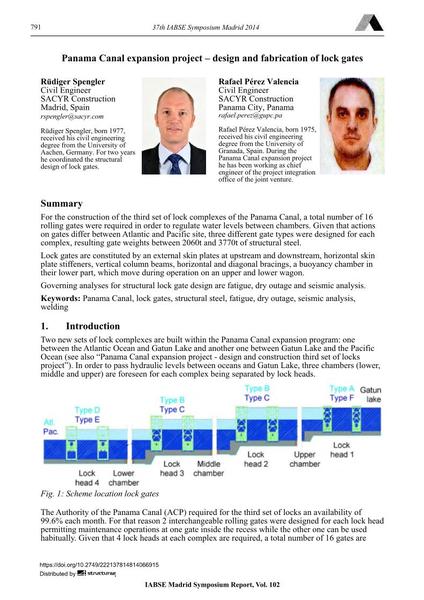Panama Canal expansion project – design and fabrication of lock gates

|
|
|||||||||||
Bibliographic Details
| Author(s): |
Rüdiger Spengler
Rafael Pérez Valencia |
||||
|---|---|---|---|---|---|
| Medium: | conference paper | ||||
| Language(s): | English | ||||
| Conference: | IABSE Symposium: Engineering for Progress, Nature and People, Madrid, Spain, 3-5 September 2014 | ||||
| Published in: | IABSE Symposium Madrid 2014 | ||||
|
|||||
| Page(s): | 791-798 | ||||
| Total no. of pages: | 8 | ||||
| Year: | 2014 | ||||
| DOI: | 10.2749/222137814814066915 | ||||
| Abstract: |
For the construction of the third set of lock complexes of the Panama Canal, a total number of 16 rolling gates were required in order to regulate water levels between chambers. Given that actions on gates differ between Atlantic and Pacific site, three different gate types were designed for each complex, resulting gate weights between 2060t and 3770t of structural steel. Lock gates are constituted by an external skin plates at upstream and downstream, horizontal skin plate stiffeners, vertical column beams, horizontal and diagonal bracings, a buoyancy chamber in their lower part, which move during operation on an upper and lower wagon. Governing analyses for structural lock gate design are fatigue, dry outage and seismic analysis. |
||||
| Keywords: |
fatigue welding seismic analysis structural steel Panama Canal dry outage
|
||||
